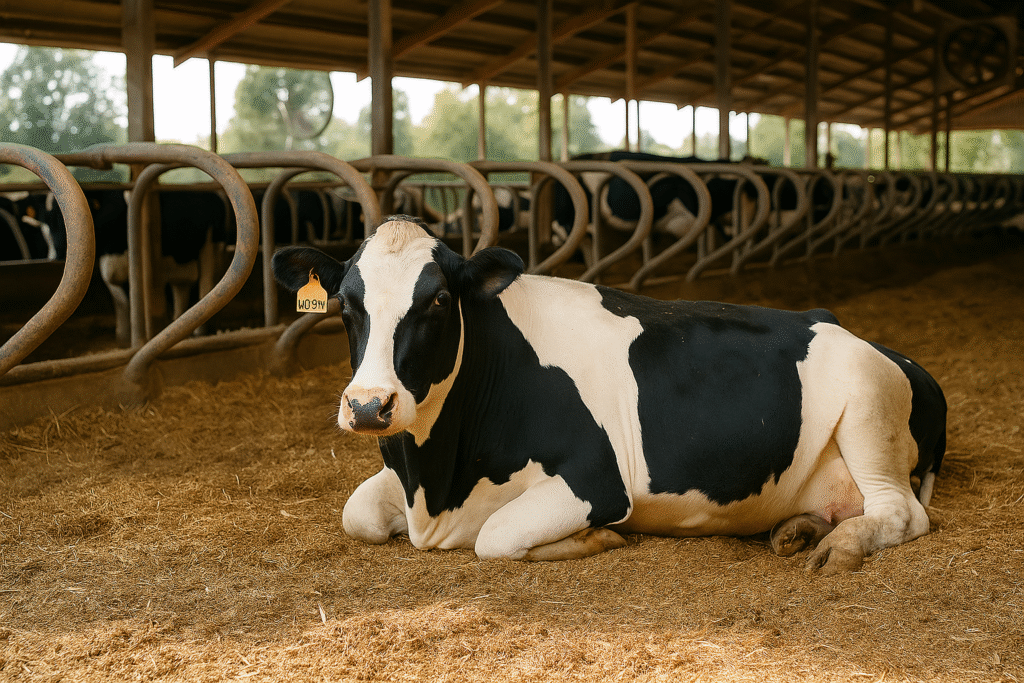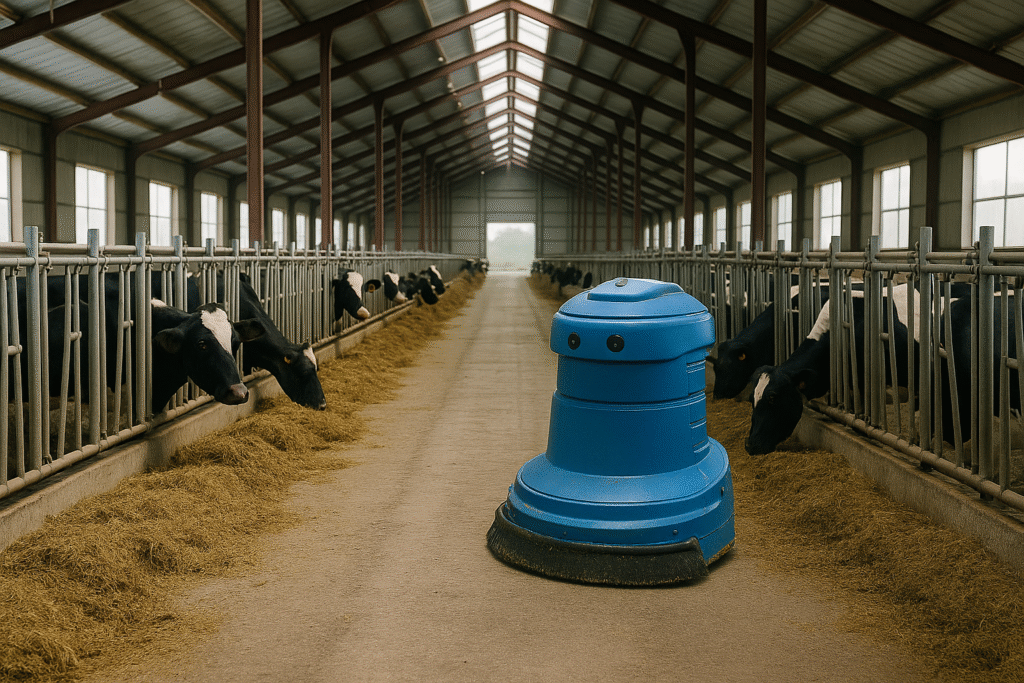
Cow Comfort & Welfare: The Hidden Key to Sustainable Dairy
Introduction
When people think about sustainable dairy farming, the first things that often come to mind are reducing greenhouse gas emissions, protecting waterways, or improving soil health. While these are essential, there’s another factor that plays an equally important role but is often overlooked: cow comfort and welfare.
Happy, healthy cows do not only make the farmer feel good , they also live better lives and produce more milk, stay healthier for longer, and reduce a farm’s environmental footprint. Whether you’re a rural dairy farmer or someone living in the city who enjoys a bit of milk in your coffee, understanding the link between cow comfort and welfare and sustainable dairy farming is eye-opening.
In this post, we’ll explore why cow comfort matters, how it impacts sustainability, and the practical steps farmers are taking around the world. By the end, you’ll see that when cows thrive, so does the planet.
What Do We Mean by Cow Comfort & Welfare?
Cow comfort and welfare go far beyond simply having food and water. It’s about creating an environment where cows can live in line with their natural behaviors. A cow’s daily needs include:
- Space to lie down and rest without crowding.
- Good bedding that is soft, clean, and dry.
- Consistent access to feed and clean water.
- Ventilation and shade to keep cool in summer.
- Safe flooring that reduces slips and injuries.
- Low-stress handling by farmers and staff.
Just like humans, when cows are comfortable, their stress levels drop, immune systems stay strong, and overall wellbeing improves.
Why Cow Welfare Is the Hidden Key to Sustainable Dairy
Sustainability in dairy often gets framed around environmental impact, but cow welfare is deeply linked to these outcomes.
1. Healthier Cows = Lower Emissions
A comfortable cow that’s well-fed and stress-free digests feed more efficiently. This means less methane is produced per liter of milk. Healthier cows also stay in the herd longer, reducing the need for replacements and lowering the farm’s overall footprint.
2. More Milk, Less Waste
When cows are relaxed and cared for, their milk production naturally increases. Farmers can achieve higher yields without adding more cows, land, or feed — which means less strain on the environment.
3. Longer Lifespans = Fewer Resources
If a cow lives happily and productively for many years, fewer calves need to be raised as replacements. This lowers the energy, feed, and resources required to sustain the herd.
4. Consumer Trust & Market Value
Modern consumers — especially city-based ones — are increasingly asking how their food is produced. Dairy farms that prioritize cow welfare not only improve sustainability but also strengthen trust with customers who care about ethical farming.
How Farmers Improve Cow Comfort in Practice
Bedding & Resting Areas
Cows spend about 12–14 hours lying down each day. Bedding options include sand, straw, sawdust, or specialized rubber mats. Soft, clean bedding reduces injuries, keeps udders healthier, and prevents lameness.
Ventilation & Cooling
Heat stress is a real issue, especially with climate change. Farmers use fans, sprinklers, and shade structures to keep cows cool. Well-ventilated barns also reduce respiratory problems.
Feed & Water Access
Cows prefer to eat many small meals throughout the day. Farmers design feeding areas so every cow can eat comfortably without competition. Automatic waterers ensure a constant supply of clean water.
Flooring & Walking Surfaces
Rough, slippery floors can cause injuries. Many barns now use grooved concrete or rubber flooring, which improves traction and reduces joint strain.A lot of farms nowadays also have cow beds in the barn, so the cows got a relaxing place to lie down.
Low-Stress Handling
How cows are moved and treated matters. Calm handling reduces stress and injuries, while positive interactions with farmers (yes, cows recognize and trust their handlers!) create a healthier herd dynamic.
Technology Helping Cow Welfare
Modern dairy farms are blending tradition with technology to give cows the best care possible.
- Cow Fitbits (activity trackers): Devices monitor movement, lying time, and rumination, alerting farmers if a cow is unwell.
- Robotic Milking Systems: Allow cows to choose when they want to be milked, reducing stress and aligning with natural behaviors.
- Automatic Feed Pushers: Ensure fresh feed is always available.
- Climate-Controlled Barns: Automated fans, curtains, and sprinklers keep barns comfortable year-round.
These technologies don’t replace farmers — they enhance their ability to care for cows more precisely and sustainably.
The Global Perspective
Different countries approach cow welfare in unique ways:
- Netherlands: Many farms combine grazing with robotic milking, giving cows freedom and technology at the same time.
- New Zealand: Grass-based systems allow cows to roam freely, with a focus on rotational grazing for both cow comfort and soil health.
- United States: Larger herds often rely on free-stall barns, but new welfare standards are pushing for more space and improved housing.
- India: Smallholder farmers often see cows as family members, with welfare tied to cultural and traditional practices.
No matter the country, the principle is the same: cow comfort equals sustainable dairy.
Why City Folks Should Care
Even if you’ve never set foot on a dairy farm, cow welfare matters to you. Here’s why:
- Better milk and dairy products: Stress-free cows produce milk with higher quality and consistency.
- Ethical food choices: Knowing that your cheese, butter, or yogurt comes from cows that live well makes every meal more meaningful.
- Environmental footprint: Supporting sustainable dairy means supporting farming systems that lower emissions and protect natural resources.
Linking Soil, Pasture, and Cow Welfare
It’s not just about barns and bedding — cows also depend on the land. Healthy pastures mean better forage, which keeps cows nourished naturally. In turn, well-fed cows graze more efficiently and recycle nutrients back into the soil through manure. This cycle strengthens both cow health and farm sustainability.
( You might also enjoy our related post on Soil Health and Farming: Building Strong Pastures and Crops.)
Challenges Farmers Face
It’s not always easy. Investing in cow comfort can be expensive, and smaller farms may struggle to upgrade housing or adopt new technology. Climate extremes like heatwaves and floods also make it harder to maintain welfare standards.
However, many governments, co-ops, and NGOs are supporting farmers through subsidies, training, and certifications — because the benefits extend far beyond the farm gate.
The Future of Cow Comfort & Sustainable Dairy
The dairy farm of the future will likely combine:

- Smart barns with sensors and robotics.
- Pasture-based systems where cows graze freely.
- Stronger welfare standards demanded by consumers.
- Greater focus on climate resilience.
At the heart of it all is one truth: when cows are cared for, everyone benefits — the farmer, the consumer, and the planet.
Conclusion
Cow comfort and welfare aren’t just “nice extras” for modern dairy farming — they’re the hidden key to making dairy truly sustainable. From reducing emissions and improving milk production to building consumer trust, focusing on cow wellbeing is a win for everyone.
So, the next time you enjoy a scoop of ice cream or pour milk into your coffee, remember: behind that product is a cow, and her comfort is directly linked to the future of farming.
